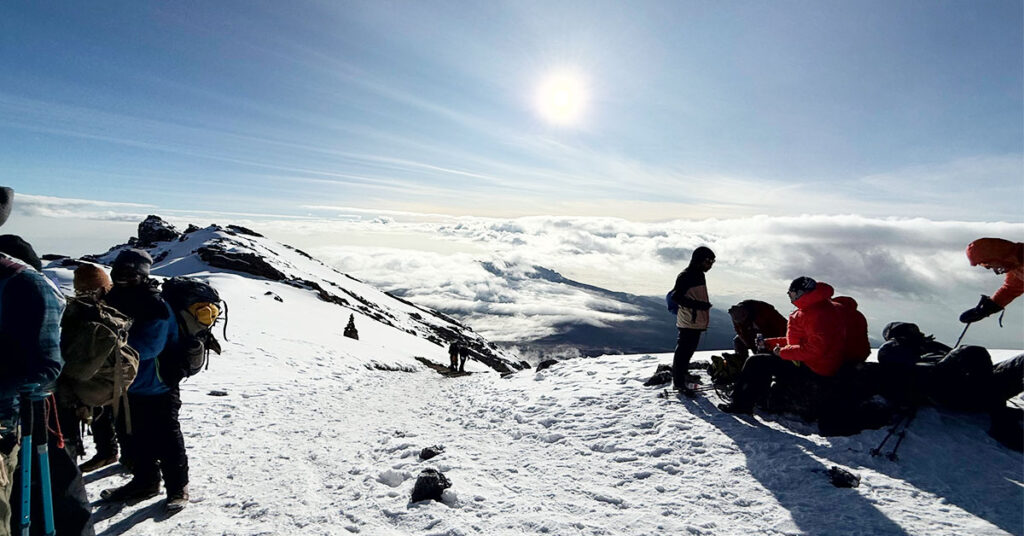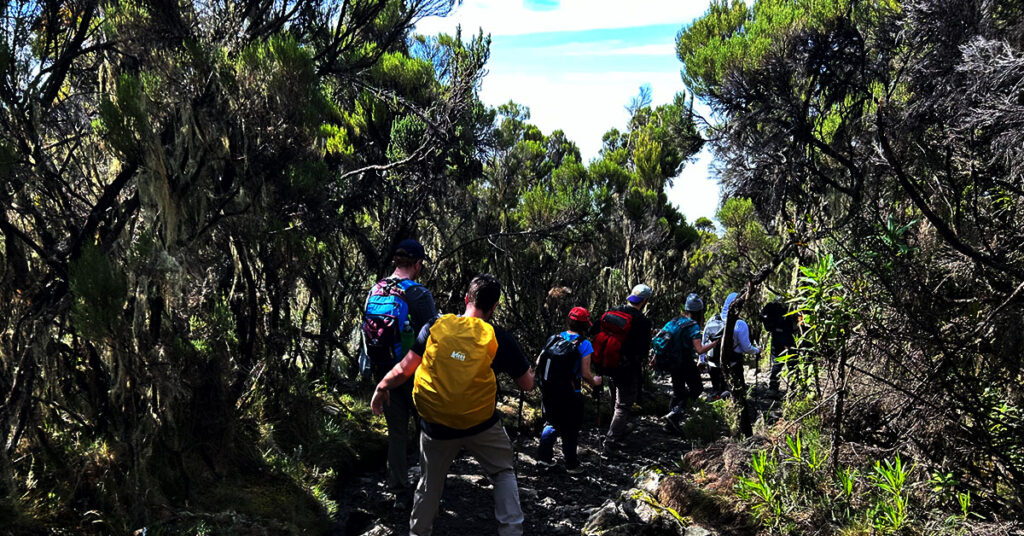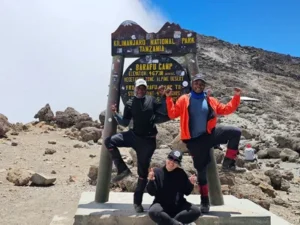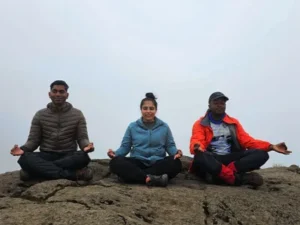Table of Contents
Final Descent of Kilimanjaro: Tips & What to Expect | Kili Quests
After reaching the summit of Mount Kilimanjaro, many trekkers feel a wave of joy and relief — but the journey isn’t over yet. The final descent presents its own challenges, often testing your stamina, knees, and focus just as much as the climb up.
In this guide, Kili Quests shares what to expect, how to manage fatigue, and tips for a safe and successful descent from the Roof of Africa.
Just summited? The descent begins immediately. Make sure your boots and trekking poles are ready — check the Summit Day Gear Guide.

What to Expect on the Way Down
1. Slippery & Rocky Terrain
Descending routes often involve:
- Loose gravel and scree, especially after Stella or Gilman’s Point
- Rocky paths with uneven footing
You’ll need to stay focused to avoid slips and strain.
2. Fatigue and Altitude
Even while going down, altitude can affect your:
- Breathing — still shallow until you reach lower camps
- Energy — you’re physically and emotionally drained from the summit push
3. Cold Temperatures
Expect:
- Freezing winds near the crater rim
- Chilly mornings/late evenings, even on descent
Layer up! Keep your shell jacket and warm fleece handy to adapt to changing conditions.
4. Emotional Exhaustion
You’ve reached the top — now comes the mental dip. It’s common to feel:
- Relief mixed with fatigue
- Less motivation, especially during the long walk down
Stay present, take breaks, and celebrate the journey.
Tips for a Safe Descent
1. Take It Slow
- Use short, stable steps
- Avoid rushing to protect your knees and ankles
- Watch out for scree and gravel slopes
2. Use Trekking Poles
- Reduce joint impact on your knees
- Improve balance on unstable terrain
Adjust your poles for downhill support — you’ll thank yourself later.
3. Stay Hydrated & Eat Snacks
- Continue drinking water regularly
- Fuel your body with nuts, chocolate, or energy bars
Hydration is just as important on descent as during the climb up.
4. Listen to Your Body
- If your knees ache, slow down or stretch
- Take frequent breaks to catch your breath and prevent injury
5. Dress in Layers
- The temperature rises as you descend
- Remove layers gradually — but keep your rain jacket close
Descent weather can shift quickly — be ready for cold, wind, or even light rain.

After the Descent: What Happens Next?
Rest & Recovery
- Your body will need 1–2 days to recover from the summit effort
- Sleep, stretch, and hydrate to promote muscle recovery
Speed up recovery with our Post-Kilimanjaro Stretching Tips.
Celebration & Reflection
- Completing the trek is a huge milestone — emotionally and physically
- Take time to reflect on your accomplishment with your team
Final Camp or Exit Gate
- Most climbers descend to Mweka Camp or Horombo Hut, then hike out the next day
- You’ll receive a summit certificate and enjoy a final lunch before departure
See What’s Included in Our Climb Package — we support you all the way, from trailhead to celebration.
Final Word from Kili Quests
At Kili Quests, we guide you through the entire journey — not just the summit. From pacing to packing to proper descent planning, our experienced team ensures that every part of your trek is safe, ethical, and rewarding. Ready to plan your Kilimanjaro climb with experts who care?
Contact Kili Quests now and let us guide you from base to summit — and safely back again.
Related Articles

Climb Kilimanjaro or Mount Meru? Trekking Guide 2025
April 15, 2025
No Comments
Table of Contents Kilimanjaro vs Mount Meru: Which Trek Should You Choose? If you’re planning a mountain adventure in Tanzania, two peaks often come

Climb Kilimanjaro via Shira Route: Scenic & Remote
April 15, 2025
No Comments
Table of Contents Shira Route on Kilimanjaro: Remote Trail with Open Views Why Choose the Shira Route? Due to this high starting point, it’s best

Machame Route: Most Popular Kilimanjaro Path
April 15, 2025
No Comments
Table of Contents Machame Route on Kilimanjaro: Most Popular Kilimanjaro Path Why Choose the Machame Route? The Machame Route is the most popular way to


